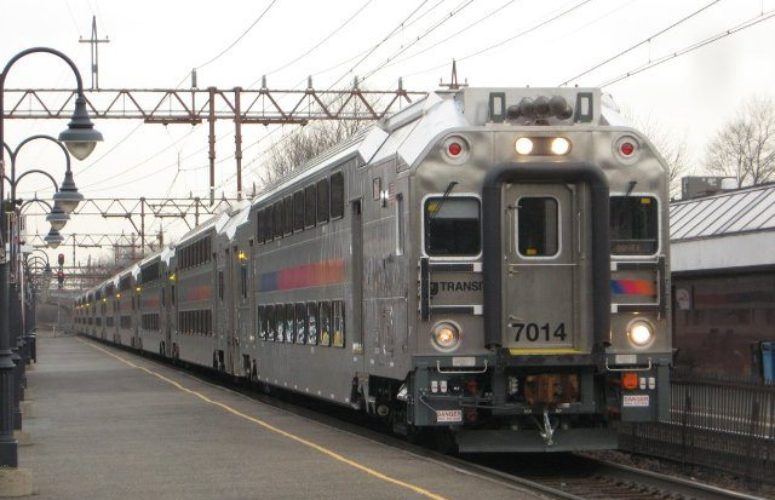
Poll: Washington Not Paying Enough Attention to Infrastructure
On May 22, 2018Most Americans say that Donald Trump and the federal government in general are not making the nation’s transportation infrastructure enough of a priority. The Monmouth University Poll also finds that few Americans give the state of their local roads and bridges a positive rating, but there is some evidence that most are not really aware of the current condition of their local infrastructure.
A majority of Americans (55%) say Pres. Trump is not giving enough attention to the country’s transportation infrastructure. Just 26% say he is giving this issue enough attention and another 4% say he is giving it too much attention. The White House unveiled a proposal in February that it claims will stimulate more than a trillion dollars in infrastructure investment nationwide. Less than half of the public think that it is very (10%) or even somewhat (34%) likely that this plan will become a reality. Another 25% say it is not too likely and 25% say it is not at all likely to happen.
If the infrastructure plan is not enacted, most Americans (53%) would blame both Trump and Congress equally. The remainder would primarily blame Congress (36%) rather than the president (7%) for the lack of action on this proposal. Most Democrats (69%) and independents (56%) would place the blame equally on Trump and Congress, but most Republicans (63%) would point the finger squarely at Congress.
“Despite the fact that the White House has declared an ‘Infrastructure Week’ many times over the past year, the American public sees very little concrete evidence that this is a priority,” said Patrick Murray, director of the independent Monmouth University Polling Institute.
More than 6-in-10 Americans (62%) say the federal government is not spending enough on transportation infrastructure projects in their local area, compared to just 19% who say the feds are spending enough and 9% who say they are spending too much. State governments do not do much better, with 57% saying that their respective state governments are not spending enough on local road and bridge projects, compared with 25% who say they are spending enough and 10% who say they are spending too much.
Americans are divided on whether their local area is getting its fair share of infrastructure resources, with 46% saying it is and 43% saying it is not. Residents who live in the Southwest and Mountain States are the most likely to say their area is getting its fair share of transportation investment (54%) followed by just under half those in both the West Coast (48%) and Southeast (48%) regions of the country. Residents in the Midwest (43%) and Northeast (41%) portions of the United States are somewhat less likely to feel their local area is getting its fair share.
Just under 1-in-5 Americans (18%) say that most of the bridges in their area need urgent repair and another 25% say some of their local bridges need urgent repair. A majority say either just a few (32%) or no local bridges (19%) need urgent repair. Monmouth pollsters also examined public opinion on local infrastructure based on the current conditions of local bridges using county-level data compiled by the Federal Highway Administration. In counties where fewer than one-third of the bridges are rated as being in “good” condition, a majority of residents say that most (24%) or some (30%) of their local bridges need urgent repair. This concern is less widespread, but only somewhat, in areas where the bridges are in better condition. Among those living in counties where between a third and half of the bridges are rated as being in “good” condition, more than 4-in-10 say that most (18%) or some (25%) of those bridges need urgent repair. In counties where between half and two-thirds of bridges are in “good” condition, just under 4-in-10 of these residents say that most (15%) or some (24%) of their bridges need urgent repair. However, even in counties where more than two-thirds of the bridges are deemed to be in “good” condition, 1-in-3 still say that most (12%) or some (21%) of their local bridges are in urgent need of repair.
Americans are slightly more likely to say that their local roads need urgent repair when compared to how they feel about their bridges. This includes 34% who say most roads in their area urgently need repair, 31% say some of them need repair, 27% say a few of the roads need repair, and just 7% say none of their local roads need urgent repair.
Overall, one-third of the public rate the quality of their local road and bridge infrastructure as excellent (4%) or good (30%), while 41% say it is just fair and 23% say it is poor. Almost half of those who live in the Southwest or Mountain States (48%) rate their local transportation infrastructure positively (excellent or good). This compares to around 1-in-3 residents in other parts of the country, including the West Coast (37%), Southeast (34%), Midwest (32%), and Northeast (28%). There are no significant differences to this opinion based on the FHA rating of bridge conditions in each county.
Opinion is divided on whether the condition of one’s local transportation infrastructure is helping (25%) or hurting (25%) growth in the area’s economy. However, nearly half the public (45%) say that the infrastructure situation has no impact on their local economy either way. There are also no significant differences to this opinion based on the FHA rating of bridge conditions in each county.
“One of the more interesting findings here is how little differentiation there is in opinion of infrastructure’s impact on the local economy when we use FHA bridge ratings as a proxy for infrastructure quality. Perhaps those who live in better maintained areas simply have higher expectations, or it could be that many Americans are simply unaware of the state of the infrastructure in their own backyard,” said Murray.
The Monmouth University Poll was conducted by telephone from April 26 to 30, 2018 with 803 adults in the United States. The results in this release have a margin of error of +/- 3.5 percentage points. The poll was conducted by the Monmouth University Polling Institute in West Long Branch.
To access more business news, visit njbmagazine.com
Related Articles:





